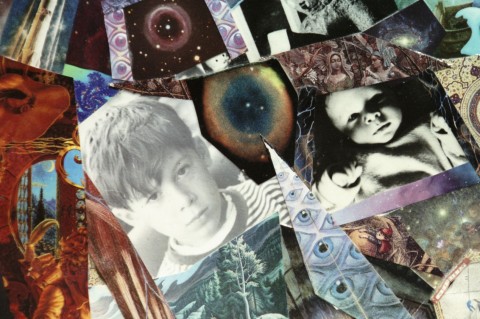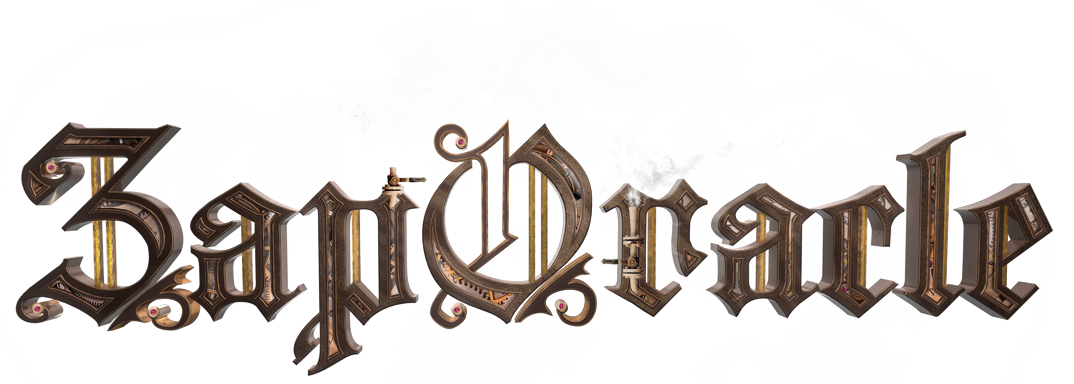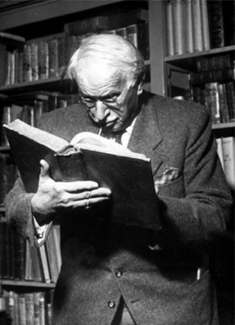
NOW that I’ve introduced the Singularity Archetype, I’ll relate the story of how I first encountered it in the external world. I provide the account not just as an autobiographical tangent but also as a case history of an encounter and ongoing relationship with this archetype.
It was a summer afternoon in 1969 or 1970, and I was about twelve or thirteen years old. I was sitting in our tiny breakfast room, an annex to the kitchen of my family home in the Bronx, watching our black-and-white television. A sci-fi film was coming on, a 1960 British movie with an arresting title: Village of the Damned. I’m pretty sure my dad was sitting behind me and that he watched the film as well. Nothing I had ever seen on television was so mesmerizing — the story and the serious and intelligent tone of the film were magnetic for me.
Although I didn’t share this with my dad or anyone else, the film left me stunned and shaken. It was a life-changing encounter, and the experience had a religious intensity. I felt as though the film came from inside of me. The core of my being began to vibrate, and I knew that something of the greatest significance had occurred. Nothing I had ever seen or heard in the outer world struck certain of the deepest and most hidden parts of my being as this film had. I felt the stir of destiny like a field of crackling electricity all around me. How did they know? Where had this film come from?
Village of the Damned was my first encounter with a full-blown expression of the Singularity Archetype in the outer world as an artifact of contemporary culture. It was also expressed in one of the most potent carriers of mythology ever created — the movie. A few months ago (writing in the summer of 2010), all across the globe, there were many other twelve-year-olds having a similar experience of religious intensity watching the movie Avatar.
Note added in 2023: Later, that feeling would be wrecked by the sucktacular Avatar sequel.
The same year I had this experience with The Village of the Damned, I came to a life-changing revelation about a nearly-fatal paranormal experience that occurred when I was ten. The revelation had spiritual dimensions and filled me with a sense of the profound meaningfulness and high stakes of life.44 When I was fourteen, I had a second encounter with the Singularity Archetype, expressed in another potent mythological form. This time the medium was a science fiction novel, Arthur C. Clarke’s masterpiece, Childhood’s End. I carried my battered paperback copy of Childhood’s End through the halls of the Bronx High School of Science, and it became (as the right book should) a ball of light glowing in my hands. Besides the content, what was most disturbing was that what I thought were my most creative and original science fiction ideas, ideas that I expected to write about one day, had somehow shown up in this tattered paperback. I flipped back to the copyright page— 1953–this book was written four years before I was born! How could such a thing be possible? This was probably also the year I encountered Clarke’s other masterpiece, 2001, his visionary collaboration with Stanley Kubrick that brought the Singularity Archetype to the big screen with cutting-edge Industrial Light and Magic special effects. Although the film was released in 1968, I probably first saw it as a revival in 1971.
Dostoevsky and the Voice from the Clock-Radio
Another key anomaly occurred during my fourteenth year, though it will not be clear until later in this book how it is directly related to the Singularity Archetype.
I felt something prod me out of the deep sleep of a healthy fourteen-year-old at two or three o’clock in the morning. Some irresistible inner prompting had me reaching toward my futuristic-looking Panasonic clock radio to switch on the sound. When I did so, I heard a voice emanating from the radio that sounded exactly like my own mind speaking in my head. I was stunned and wondered if I was still dreaming, but-
44 See “A Mutant Convergence — How John Major Jenkins, Jonathan Zap and Terence Mckenna Met During a Weekend of High Strangeness in 1996” ZapOracle.com
-everything in the room felt so physical and real. The voice seemed to express my innermost thoughts, the thoughts I had not shared with anyone and the thoughts and feelings expressed by the voice had what I thought were the unique perspective of my own mind and personality. Suddenly there was a station identification break, and I found out what was going on. It was WBAI, FM, the station I tuned into far more than any other.
The WBAI of the Sixties and Seventies was unlike any radio station that has ever existed before or since. “Referred to in a New York Times Magazine piece as ‘an anarchist’s circus,’ one station manager was jailed in protest, and the staff, in protest at sweeping proposed changes of another station manager, seized the studio facilities, then located in a deconsecrated church, as well as the transmitter, located atop the Empire State Building.”45 Tuning into WBAI at random, I could find almost anything going on, and some of it was mind-blowing. For example, there was a popular show run by hilariously militant lesbians. Males were not even permitted to call the show, but they did anyway, and always to tell the militants how much they loved and supported them. In return, the lesbians showered them with verbal abuse — ”Well, don’t you worry your pretty little head about it!” they would say as they hung up on the male callers.
As we’ll see with this and many other examples, a source of cultural novelty is also likely to be a source for strange, sometimes synchronistic encounters with the Singularity Archetype. Some of the stranger radio shows of that era of New York City played an almost internet-like role in informing me about esoteric subjects. The most significant was the famous Long John Nebel all-night radio show, a magnet for all subjects paranormal and the forerunner of Art Bell and the Coast-to-Coast AM franchise. I pulled many all-nighters during my high school years, experimenting with photography in our basement darkroom while listening to reports of the bizarre and anomalous on the radio.
After the WBAI station identification break, I discovered that what seemed like telepathic radio was actually an all-night live reading from Dostoevsky’s haunting novella, Notes from Underground.
When I was nineteen, and a junior in college, I had the first chance of my academic career to do some independent research. I had always meant to find out who this Dostoevsky was and how he seemed to able to write in a way that uncannily evoked the inner contents of my mind. As with the other encounters, Dostoevsky novels were cases of the supposed firewall between inner and outer blurring out into a wide-open portal. Thinking about the psychology of Dostoevsky characters while-
45 http://en.wikipedia.org/wiki/Wbai
-sitting on a bench at night in a quiet part of the college campus, I crossed a developmental event horizon and experienced the beginning of my adult consciousness. It was such a decisive change that memories before and after that moment have a decidedly different quality, as my fundamental level of self-awareness transformed. The threshold occurred as a cascade of insights revealed a psychological model and type that characterized me and many of Dostoevsky’s key characters. I called this type “the profound egocentric,” but had no idea how it connected to my other obsessions related to the Singularity Archetype.46
Having successfully, I thought, penetrated the Dostoevsky anomaly the year before, in the last semester of my senior year at college, I set out to understand the strange, uncanny significance I sensed in Village of the Damned and Childhood’s End.
Encounter with Jung
Unlikely help came forward during the course of my studies. The Chairman of the Philosophy Department, though I was an English major, became my benefactor and opened doors for me in a highly conservative academic environment, allowing me to pursue interdisciplinary research projects in obscure, shadowy areas. But it was actually my mom, a psychologist whose career spanned forty-four years, who provided the crucial suggestion that I read what a Swiss psychiatrist named Carl Jung had to say about the “archetypes and the collective unconscious.” I looked him up in the encyclopedia and wondered what this dead Swiss guy, born in the Nineteenth Century and the son of a minister, could possibly tell me, a very weird Jewish kid from the Bronx, about my obsession with certain works of science fiction.
46 The resulting paper, “Dostoevsky and the Profound Egocentric,” can be found at ZapOracle.com.

And so I came to stand before the twenty elegant black volumes of the Princeton Bollingen edition of Jung’s collected works on the second floor of the college library. I scanned, Volume 20, the Central Index volume, for a few minutes and came across a late work, Flying Saucers, A Modern Myth of Things Seen in the Sky, published when I was a few months old. This caused the air around the library bookcase to seem to crackle with electricity, as UFOs were a major part of the science fiction that obsessed me and informed my esoteric research. Jung’s flying saucer book was included in volume ten of the collected works, Civilization in Transition, a title that has always struck me as both ominous and an almost comic example of Swiss understatement. The UFO subject seemed to haunt Jung near the end of his life. At the end of the book, it seemed like he couldn’t let go of the subject — there was an afterward, then an epilogue, and finally, a supplement.
As I glanced through the supplement, I felt the air crackling with electricity again as if a thundercloud were above my head, and my eyes dilated in amazement. Jung devoted this final supplement to analyzing mythological layers of meaning in the British science fiction novel, The Midwich Cuckoos by John Wyndham. This was the novel that Village of the Damned was based on!!! It was as if the dead Swiss guy had stepped out of the bookcase, like a holographic projection of a wizard bearing a torch, and he was looking over my shoulder and saying, “Yes, I was fascinated by that one too, and here’s what I thought.” From that moment forward, Jung became my mentor in unraveling the mystery of the Singularity Archetype.
Even then, however, I could see that Jung’s supplement on The Midwich Cuckoos, with its strange placement after an afterward and an epilogue, seemed to have been the hastily thrown together afterthoughts of a restless mind obsessed with a subject on it could not find closure. Jung was writing near the end of his life, and the flying saucer mythology he was studying was only in its infancy. Jung did not, by the way, assume that UFOs were merely hallucinations. He noted that they often reflected radar and wondered aloud if they might not be physical exteriorizations of the collective unconscious. Jung’s supplement spent two paragraphs summarizing the novel and then just two paragraphs speculating about some of its implications and mythological motifs.
Some of Jung’s observations paralleled my own. I sensed, as Jung did, that unlike Arthur C. Clarke, Wyndham was viewing the singularity from the fearful vantage of the old form. Jung’s brief study ends with a sentence, also the last sentence of the entire book, that seems to reflect the extreme unfinished ambiguity that Jung felt about the whole subject: “Thus the negative end of the story remains a matter for doubt.” What a strange sentence to end a book with! At the same moment that I recognized Jung as my mentor and discovered that I needed to stand on his shoulders to get a clearer view of the mystery, I realized that the unfinished place where he had left things was, amazingly, the very place where I had begun.
Later, I was able to clear up (in my mind, at least) Jung’s doubt because there was a consistent pattern in the unfolding mythology. When the singularity is viewed by the ego, it is seen as negative and apocalyptic, but when it is seen by the Self, it is seen as a transcendent evolutionary event. Similarly, when the ego views death (the parallel event horizon mediated by the Singularity Archetype), the ego sees emergency, while the Self perceives emergence. The answer was actually in the very last thing Jung ever published, his introductory anthology, Man and his Symbols, in the section written by his most brilliant colleague, Mare Lousie Von Franz, though neither Jung nor Von Franz realized that the two dreams she analyzed therein were the dual sides of an unrecognized archetype.
n Chapter I, Introduction: Through a Glass Darkly, I describe Von Franz coming up to the edge of discovering the Singularity Archetype.
The Singularity Archetype and the Profound Egocentric
Jung also provided a hint that revealed an unexpected connection between the paper I had written on Dostoevsky while in college and my next project on the Singularity Archetype. When I wrote Archetypes of a New Evolution the next year, I recognized that certain other writers, especially Kafka and Nietzsche, were also profound egocentrics. I also noticed that many of the mutants depicted in novels and movies inspired by the Singularity Archetype were profound egocentrics as well. However, the connection was unclear until I stumbled across an observation that Jung made about Nietzsche. In his collected works, Jung speculates that Nietzsche’s inner torment was caused by the sensory basis of language being insufficient for him to express his ideas. This hint sparked a key speculative realization — the profound egocentric personality type was primarily the outcome of psyches who had the latent capacity for a new means of communication and for whom ordinary language was not sufficient but who were living in a social matrix where no such new means of communication was supported.
In 1978, I described the realization this way:
“The profound egocentric’s intense isolation seems to begin with earliest childhood. If we postulate that the profound egocentric is capable, or partially capable, of a new means of communication while humanity as a whole is not, we could establish an excellent cause-and-effect relationship with the whole phenomenon.
“In his Symbols of Transformation, Jung discusses the sensual base of all language and the resultant limitations imposed on abstract thought. Jung suggests that Nietzche’s bitterness, loneliness, and eventual despair were the result of the inadequacy (for him) of language. If there are individuals whose mental processes have developed enough to make our present form of communication inadequate, then perhaps a new one will evolve to parallel that development.”
The finished product of my initial investigation was the philosophy honors paper, “Archetypes of a New Evolution,” which I finished in the late Spring of 1978.47 This paper, written when I was twenty, was the first step in a new life phase continuing into the present, of working with the Singularity Archetype. I have been actively writing and speaking on the subject ever since. During the summer of 2010, thirty-two years after my initial paper in college, the time arrived to crystalize my findings and begin the book you are currently reading.
Note added in 2023:
In the late spring of 1978, after completing Archetypes . . . I had a powerful intuition of a life mission that would take me forty-five years to complete. While I would continue to work on the Singularity Archetype analytically, intuition said it would be more valuable to explore and express its themes by elaborating them into a science-fiction epic.
During those forty-five years, I published thousands of pages of other writings, including the the book you’re reading. Despite earning a master’s degree in creative writing from NYU in the 80s and my already extensive writing experience, the life mission I set in 1978 eluded me for decades. I wrote numerous complete versions of the story but later realized they weren’t good enough.
Completing that task would take forty-five years, and the resulting book, Parallel Journeys, was published in the late spring of 2023.
Note: You can read Parallel Journeys free via this link. If you prefer the Audible, trade paperback, or Kindle versions, you can find those on Amazon.
There’s more on the strange story of how Parallel Journeys reached its completion stage in:
AI, the Singularity Archetype, and the High Possibility of an Impending Viral Apocalypse.
 ZapOracle.com home to the free 720-card Zap Oracle
ZapOracle.com home to the free 720-card Zap Oracle



